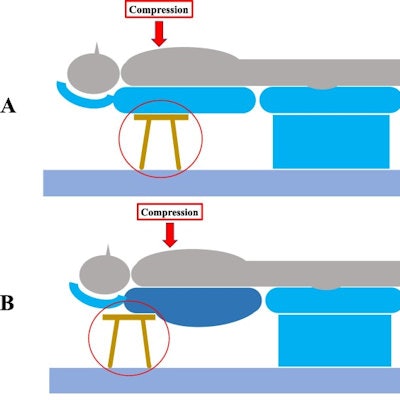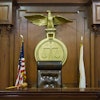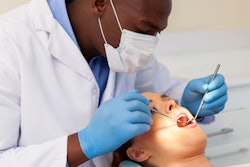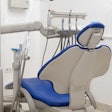
Positioning a support stool under a dental chair allows clinicians to perform more effective CPR chest compressions in patients experiencing cardiac arrest, according to a study recently published in Resuscitation Plus.
Placing a stool under a chair, specifically below a patient's shoulders allows for successful manual chest compressions by supporting the backrest of dental chairs of any shape, the authors wrote.
"The placement of a stool to support the dental chair is a simple and effective way to increase the effectiveness of manual chest compressions and should be utilized when performing CPR on a patient sitting in a dental chair," wrote the authors, led by Takashi Hitosugi of Kyushu University in Japan (Resusc Plus, August 10, 2022, Vol. 11, 100286).
When a patient experiences cardiopulmonary arrest during dental treatment, European Resuscitation Council (ERC) and American Heart Association (AHA) guidelines emphasize the importance of minimizing interruptions during manual chest compressions. However, this can be challenging in dentistry.
Quickly and safely moving a patient from a dental chair to the floor can be difficult. Also, administering CPR to a patient in a dental chair may be less effective than manual chest compressions if the vertical displacement of the backrest is large or if the chair's backrest does not adequately support effective resuscitation.
Past research has shown that stabilizing a dental chair by positioning a stool underneath it offers an effective way to perform manual chest compressions. Greater stability is achieved by reclining the dental chair and placing a stool under the backrest so that it contacts the back of the chair. Though the ERC found value in the strategy and added the technique to its guidelines in 2021, clinicians found that the support effect varied depending on the position of the stool.
To determine the efficacy of the stool-stabilization method, three AHA Basic Life Support-trained providers individually performed 10 contiguous rounds of manual chest compressions at a pace of 100 compressions per minute. This was done in synchrony with a metronome for three stool configurations: without a stool, a stool placed under the chest at the level that clinicians were performing manual chest compressions, and a stool placed under the shoulders.
 Mannequin setup and positioning of the stabilizing stool. Images courtesy of Hitosugi et al. Licensed by CC BY 4.0.
Mannequin setup and positioning of the stabilizing stool. Images courtesy of Hitosugi et al. Licensed by CC BY 4.0.A total of 600 manual chest compressions 5.1 to 6 cm in depth were recorded per participant in each dental chair, and each recorded 1,800 manual chest compressions on a chair with a severely curved backrest exterior and two other chairs with flatter shapes. Then, the data were used to measure the reduction in vertical displacement for each chair and stool configuration, according to the study.
Stool stabilization dramatically reduced the vertical displacement of the backrest for all chair types. A reduction in vertical displacement was most significant in a flat dental chair. The reduction in vertical displacement was 90% when a stool was placed under the chest at the level of the manual chest compressions and when positioned under the shoulders, the authors wrote.
 Differences in stool position for manual chest compressions (red arrow). A: The stool was placed under the chest compression site. B: The stool was placed under the shoulders.
Differences in stool position for manual chest compressions (red arrow). A: The stool was placed under the chest compression site. B: The stool was placed under the shoulders.When the curvature of the chair's backrest was large, the reduction in vertical displacement was 65% when placed under the shoulders but only 40% when it was positioned under the chest at the level of manual chest compressions, they wrote.
Nonetheless, the study had shortcomings, including that only three types of dental chairs were used, while many kinds are used worldwide. Effective manual chest compressions in any dental chair are critical to ensuring patients' safety, the study's authors wrote.
"Dentists need to prepare in advance an appropriate method (stool position) according to the external shape of the dental chair backrest to perform effective manual chest compressions and that it is very effective," Hitosugi and colleagues wrote.




















